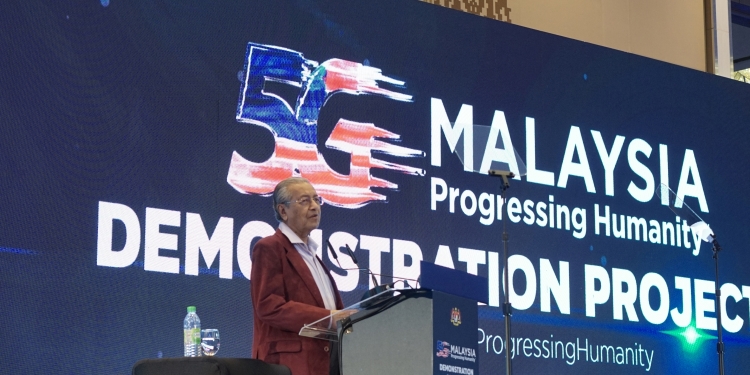The 5G Malaysia demonstration projects were officially launched by Prime Minister Tun Mahathir in Langkawi. During the event, he shared that Malaysia is on track to commercially rollout 5G in the 3rd quarter of 2020.
In his speech, he thanked the MCMC for laying the necessary building blocks for the implementation of 5G in the country. He added that 5G has the power to promote an array of new services to improve our manufacturing efficiency and to spur innovation nationwide.
In terms of economy, he said that 5G can serve as the infrastructure for innovative growth. This will create new opportunities for industries, society and individuals to advance their digital ambitions and to deliver new and better services. He added that Accenture had forecasted that Industrial Internet of Things has the potential to add as much as US$14.2 trillion to the global economy and Gartner has also forecasted that the number of connected “things” worldwide may reach as much as 20.4 billion units this year.
Under the 5GDP, there are now 100 identified use cases with 72 5G use cases currently demonstrated at 56 live 5G sites across Kedah, Wilayah Persekutuan Kuala Lumpur, Perak, Selangor, Terengganu and Penang. The use cases cover 9 different verticals namely agriculture, digital healthcare, education, entertainment/media, manufacturing and processing, oil and gas, smart city, smart transportation and tourism.
Langkawi was selected as the pioneer location for 5G demonstration projects due to its ideal demographic as a controlled environment. Some of the live use cases include digital healthcare which enables real-time medical data transfer and remote consultation at Sultanah Maliha Hospital. There’s also smart city use cases which uses 5G to offer better surveillance at ports and tourist spots. To boost agriculture output, 5G is also utilised to enable smart agriculture.
The MCMC has identified 700MHz, 3.5GHz, 26GHz and 28GHz as the pioneer 5G spectrum bands in Malaysia. The lower 700MHz and 3.5GHz spectrum bands will be assigned to a single entity in the form of a consortium while the higher 26GHz and 28GHz bands will be assigned to licensees for nationwide rollout and non-licensees for localised private networks. The beauty contest process for the assignment will start in Q1 2020 and the spectrum will be ready for commercial use in Q3 2020.








